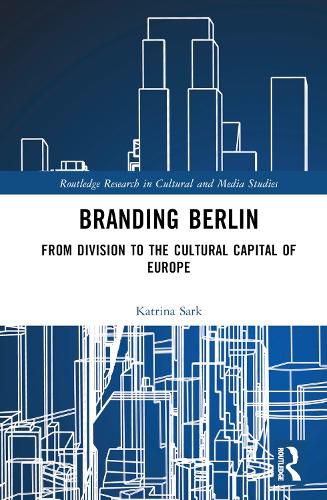Readings Newsletter
Become a Readings Member to make your shopping experience even easier.
Sign in or sign up for free!
You’re not far away from qualifying for FREE standard shipping within Australia
You’ve qualified for FREE standard shipping within Australia
The cart is loading…






This book is a cultural history of post-Wall urban, social, political, and cultural transformations in Berlin.
Branding Berlin: From Division to the Cultural Capital of Europe presents a cultural analysis of Berlin's cultural production, including literature, film, memoirs and non-fiction works, art, media, urban branding campaigns, and cultural diversity initiatives put forth by the Berlin Senate, and allows readers to understand the various changes that transformed the formerly divided city of voids into a hip cultural capital. The book examines Berlin's branding, urban-economic development, and its search for a post-Wall identity by focusing on manifestations of nostalgic longing in documentary films and other cultural products. Building on the sociological research of urban branding and linking it with an interpretive analysis of cultural products generated in Berlin during that time, the author examines the intersections and tensions between the nostalgic views of the past and the branded images of Berlin's present and future.
This insightful and innovative work will interest scholars and students of cultural and media studies, branding and advertising, urban communication, film studies, visual culture, tourism, and cultural memory.
$9.00 standard shipping within Australia
FREE standard shipping within Australia for orders over $100.00
Express & International shipping calculated at checkout
This book is a cultural history of post-Wall urban, social, political, and cultural transformations in Berlin.
Branding Berlin: From Division to the Cultural Capital of Europe presents a cultural analysis of Berlin's cultural production, including literature, film, memoirs and non-fiction works, art, media, urban branding campaigns, and cultural diversity initiatives put forth by the Berlin Senate, and allows readers to understand the various changes that transformed the formerly divided city of voids into a hip cultural capital. The book examines Berlin's branding, urban-economic development, and its search for a post-Wall identity by focusing on manifestations of nostalgic longing in documentary films and other cultural products. Building on the sociological research of urban branding and linking it with an interpretive analysis of cultural products generated in Berlin during that time, the author examines the intersections and tensions between the nostalgic views of the past and the branded images of Berlin's present and future.
This insightful and innovative work will interest scholars and students of cultural and media studies, branding and advertising, urban communication, film studies, visual culture, tourism, and cultural memory.